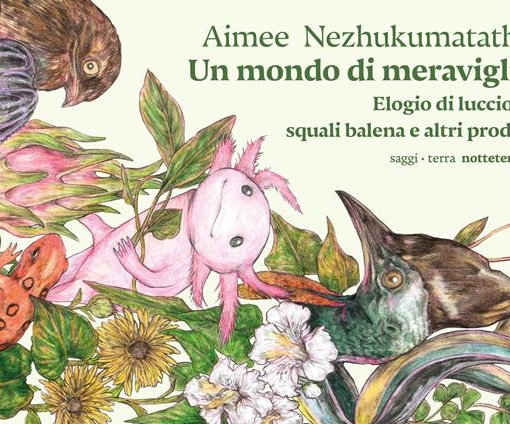In a world overwhelmed by waste and plastic, a growing awareness of environmental issues urges us to reflect. Can we fix this? What positive habits can each of us adopt, in our own small way, to help improve the situation? If we look around our homes, we see we are surrounded by bags for every purpose. Let’s begin there.
There are disposable, durable, biodegradable, and compostable types. Not everyone knows the meaning of these terms, and not always clearly. Let’s clarify.

Which one is the best to choose?
The compostable Mater-Bi bag we often take from the supermarket has a short lifespan; it can be used once or twice to carry items and then to collect organic waste. However, we may not know that producing 100 bags of 25 liters each, weighing 1.6 kg in total, requires ½ kg of corn and 1 kg of sunflower oil. These food resources are diverted from consumption by local populations in Latin America. Furthermore, producing 1 kg of Mater-Bi consumes 19–53 MJ of energy, 15–30 liters of water, and emits 0.34–1.2 kg of CO2.

The compostable paper bag is an extremely eco-friendly choice. It is highly durable, can be reused many times if kept dry, is safe for health as it does not release harmful substances, and is easily recyclable.
It is made from process waste from the sawn-wood industry (kraft paper), recycled paper, and/or straw (straw paper). Producing 1 kg of new paper consumes 600 liters of water, while 1 kg of recycled paper uses only 70 liters.
One paper bag generates 12 g of CO2, whereas producing 1 kg of paper emits 0.65-1.25 kg of CO2, depending on the energy source.
Notably, the carbon stored by trees remains in forest products such as wood and paper bags.
One kilogram of paper stores 1.3 kg of CO2 equivalent, and the carbon sequestration period remains unchanged even when the paper is recycled.
The fibers used are recycled on average 3.5 times; however, paper recycling still requires adding a certain amount of fresh fiber because cellulose fibers degrade with each recycling cycle.

The durable plastic bag, seemingly harmless, lightweight, and highly practical, has revolutionized the way we shop and transport items since its creation in the 1950s. However, uncontrolled distribution and improper disposal have resulted in a significant environmental cost. Plastic bag pollution is one of the most challenging environmental issues of our time.
Plastic bags are disposable products, used only a few times before being discarded, often ending up scattered in the environment.
They are made from HDPE (high-density polyethylene), whose production requires large amounts of energy and is linked to greenhouse gas emissions.
To produce 1 kg of HDPE, 1.75 kg of oil and 18 liters of water are consumed, generating 6 kg of CO2 emissions.
The main problem arises from their dispersion in nature. Every year, millions of tons of plastic bags enter seas, oceans, rivers, and land, creating a massive environmental issue.
Plastic does not decompose but breaks down into increasingly smaller pieces (micro/nanoplastics) that enter the food chain, potentially impacting human health in ways not yet fully understood. They cause soil pollution, reduce soil fertility, and threaten ecosystems and biodiversity.
To give an example of the effects of land dispersion: researchers at the EcoLab in Toulouse conducted daily measurements for five consecutive months in an area 6 km from the nearest village, 25 km from the town, and 120 km from the city. Each day, 249 fragments, 73 films, and 44 microplastic fibers fall per square meter in this area (the fibers have an average length of 750 microns—thousandths of a millimeter—and the fragments are 300 microns).

Photo by Evelyn Simak CC BY-SA 2.0,
Regarding dispersion in water: microplastics and nanoplastics are ingested by marine fauna, including organisms at the base of the food chain, such as krill. Marine animals like turtles, dolphins, and whales often die from ingesting plastic bags, which they mistake for food.

Equally devastating is the impact on marine ecosystems: seabeds and coral reefs are being suffocated by plastic bags, destroying natural habitats.
Rejecting plastic bags, reducing consumption, and recycling properly are essential first steps to curbing this issue.

Unlike single-use plastic bags, durable plastic bags can be reused many times and are therefore considered more sustainable, although issues with disposal and microplastics persist.
They are made from polypropylene, a synthetic plastic derived from petroleum fractions. Chemically, polypropylene (PP) is a thermoplastic polymer of propylene (or propene).
Producing 1 kg of PP (polypropylene) emits approximately 2.5 kg of CO2.
It is important to note that producing one ton of plastic requires 900 liters of oil, 180 cubic meters of water, and 14,000 kWh of energy.
However, producing one ton of recycled plastic requires only 2 tons of used plastic, 1 cubic meter of water, and 950 kWh of energy.
In Europe, we consume 40 million tons of plastic annually, yet we recycle less than 10 percent of it.
These figures highlight the importance of proper waste separation and an efficient recycling process.

Using durable, biodegradable canvas bags can significantly help reduce plastic waste. Made from natural fibers, primarily cotton, they are biodegradable and eco-friendly; cotton can be recycled and composted. These bags are durable, highly resistant, and versatile, suitable for various uses—not only shopping but also leisure, office, hobbies, and study.
Cotton cultivation, however, requires substantial resources: 15 kWh of energy and 11,000 liters of water are needed to grow and produce 1 kg of cotton fiber, with 5.9 g of CO2 emitted.
If the cotton is organically grown, energy consumption is reduced by 63%, greenhouse gas emissions decrease by 43%, and since each hectare of soil sequesters between 100 and 400 kg of carbon annually, emissions are further lowered.
Cotton cultivation accounts for a quarter of the pesticides produced worldwide. In India, where much of the cotton is grown, these toxic substances are still permitted.
To offset the natural resource consumption involved in production, a cotton bag must be reused at least 327 times.
To minimize resource waste and the environmental impact of cotton cultivation, it is essential to use cotton bags as much as possible, which is feasible because they are durable and reusable almost indefinitely. Once worn out, during recycling and reuse, the fibers are recovered and processed to produce drawing paper or pure cotton textile fibers.

As you can see, all the objects we’ve examined so far have aspects that can have significant environmental impacts, so… so?
Then there’s the durable and biodegradable creative bag.
Born from the creativity and imagination of women, this is a unique piece of craftsmanship.
What could be better than spending an afternoon with friends, perhaps over a cup of tea? Sketch out a project, pull pieces of canvas from discarded clothing, fabric scraps, old jeans, and belts, and sew together to create a patchwork bag. It’s more than just an object; it is a blend of social connection, relationships, empathy, and creativity, producing no CO2 emissions.
It will be a lightweight, durable, functional, and versatile bag; it is heirloom quality because it will never end; it can become a family treasure.
Once worn out, the fabrics can be separated and reused to produce other textile fibers; the leather parts can be transformed into regenerated leather or fertilizer.

For further information, we also recommend the following articles:
Earthgardening: plastic and sea, for example
Microplastics and Nanoplastics: silent threats
Credits
Maria Beatrice Lupi is a naturalist and an expert in training, sustainable development planning, participatory methodologies, and European planning. She is currently engaged in dissemination and education for sustainability.
Translated by Maria Antonietta Sessa



